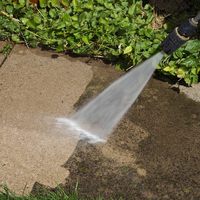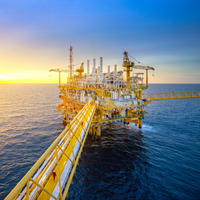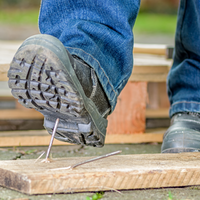How a Pressure Washer Operates
Introduction
In an industrial laundry, there are instances when you've used clean water, soap, and washing chemicals and the dirt still seems to be resistant. The pressure washer should then be deployed. Pressure washers can be used for a range of outdoor jobs like cleaning driveways, patio furniture, cars, and siding, as well as preparing surfaces for painting.
A pressure washer, also known as a power washer, is a high-pressure mechanical sprayer used to remove loose paint, mold, grime, dust, muck, and filth from various surfaces and objects, including concrete, vehicles, buildings, and other things. The flow rate of a pressure washer is measured in gallons or liters per minute and is frequently fixed and built into the pump. the pressure in pounds per square inch
Parts of a pressure water
- Water inlet: A hose that connects the pressure washer to the main water supply. There's usually a filter in the inlet to stop dirt and debris entering the washer and clogging up the works. Little bits of grit are the last thing you want inside your washer—especially since they could come blasting out of the other end at high speed!
- Electric motor or gas engine: Most smaller, pressure washers (such as the very popular ones made by Kärcher) run off the domestic electricity supply, but bigger models are powered by compact gasoline engines. The engines are similar to the ones you'd find in lawnmowers (typically power rated at around 3–4kW or 3.5–5.5HP). Gas engine models are great if you're working outside in places where an electricity supply is hard to find (or where a long trailing cable would be dangerous or inconvenient). The motor or engine is designed to power the water pump.
Photo: Although domestic pressure washers are typically powered by electricity, bigger ones are often driven by small gasoline engines and produce considerably more powerful water jets. Here's the engine inside a typical gas-powered washer used by the US Marine Corps being refilled ready for cleaning helicopters. This one's made by Jenny and rated at a pressure of 3400 psi (roughly 230 times normal atmospheric pressure), which is about three times more than an average home Kärcher. It's just about the most powerful washer you'll come across! Photo by LCpl. Jesse D. Leger courtesy of US Marine Corps.
- Water pump: This is the heart of a pressure washer. It's a bit like a hand-operated ground-water pump—only it's driven at high speed by the electric motor (or gas engine) instead of your hand. When the engine pulls the pump one way, it sucks water in from the faucet; when it pushes the pump the other way, the water squirts out in a high-pressure jet. Pumps are designed to handle a water flow of around 4–8 liters (1–2 gallons) per minute.
- High-pressure hose: This is the tube that runs out from the washer to whatever cleaning attachment you've decided to use. An ordinary bit of tubing wouldn't be able to survive the high-pressure of the water flowing through it. High-pressure hose is reinforced with wire mesh and has two or more layers of high-density plastic. It's important to use hose that has a higher pressure rating than the pump in your pressure washer but, if your washer came with your own hose, there shouldn't be anything to worry about. Typically, the safety margin on pressure-washer hoses is about 300 percent, so if your washer is rated at 2000 psi, your hose should be able to withstand pressures of at least 6000 psi.
- Cleaning attachment: Depending on what you're cleaning, you can switch from a simple trigger gun (essentially just a valve that lets water through only when you squeeze the handle) to a spinning wand spray or a rotating brush to scrub your drive. Powered attachments are driven by the force of the water flowing through them.
Parts (Components) of Pressure washer
A pressure washer is less sophisticated than it sounds. It's really just a water pump powered by an electric motor. The washer takes in ordinary water from a faucet (that's a tap to you folks in the UK), the pump accelerates the water to high pressure, and then squirts it from a hose at speed through a trigger gun. You can fit various other attachments to the end of the hose for cleaning different things.
These, then, are the main parts you'll find inside a pressure washer:
Electric motor or gas engine:
The smaller pressure washers are usually run on electric supply, but the bigger ones run on gasoline. The power typically is around 3-5 kW/ 3.5-5.5 HP. The work which is located outside or off home locations like workshops require a gasoline engine.
Water Inlet:
It is a hose that acts as a connector between the pressure washer and the main supply of water. It is fitted with a filter that stops the entry of dirt and external particles from entering the washer and blocking the machine. If this debris enters the washer it can damage the whole machine. It is also dangerous as pressure would catapult the debris out, which can harm humans or property.
High Pressure Hose:
This is the tube that runs out from the washer to whatever cleaning attachment you have decided to use. An ordinary bit of tubing would not be able to survive the high-pressure of the water flowing through it. High-pressure hose is reinforced with wire mesh and has two or more layers of high-density plastic. It is important to use a hose that has a higher pressure rating than the pump in your pressure washer but if your washer came with your own hose, there should not be anything to worry about. Typically, the safety margin on pressure-washer hoses is about 300 percent, so if your washer is rated at 2000 psi, your hose should be able to withstand pressures of at least 6000 psi.
Water Pump:
What pumps are in pressure washers?
Pressure washers have two styles of pumps. You need to determine if your washer uses a triplex or axial pump. The axial is less durable and produces less PSIs than the triplex. It is typically found on low-cost models designed for the homeowner.
This is the heart of a pressure washer. It is a bit like a hand-operated ground-water pump -only it is driven at high speed by the electric motor (or gas engine) instead of your hand. When the engine pulls the pump one way, it sucks water in from the faucet; when it pushes the pump the other way, the water squirts out in a high-pressure jet. Pumps are designed to handle a water flow of around 1–2 gallons (4–8 liters) per minute.
Cleaning Attachment:
Depending on what you are cleaning, you can switch from a simple trigger gun (essentially just a valve that lets water through only when you squeeze the handle) to a spinning wand spray or a rotating brush to scrub your drive. Powered attachments are driven by the force of the water flowing through them.
How Pressure Washer Works
Pressure washers are part garden hose and part air compressor. A typical pressure washer has either a gas-fueled engine or electrical powered motor that powers a water pump. The pump accelerates the water, supplied from a garden hose, to produce high pressure. The washer is hooked to a high pressure-rated hose. At the end of the hose is a water gun that looks similar to the pressure guns used at car washes. When the trigger is pulled, the water mixes with the air and comes out of the nozzle.
Pressure washers can aggressively blast things clean with water jets pressurized at about 75 times the pressure of a garden hose. Or, they can gently spray with lower pressures for delicate cleaning. Pressure washers are commonly rated by Pounds per Square Inch (PSI) which gives power to penetrate the dirt and grime. and Gallons per Minute (GPM) which gives you the power to break down dirt and wash it away.
When choosing the best pressure washer for your needs, there are two general cleaning terms to understand. Overall cleaning performance is determined by how these work together. The higher the numbers, the faster you can clean.
Quick summary of the basic mechanism :
- Detergent flows in from a bottle or container through one hose.
- Cold water flows in from a faucet (tap) through another hose and is filtered on the way in.
- An electric motor or diesel engine powers the washer.
- Powered by the engine or motor, a water pump (impeller) draws in the detergent and water and mixes them together. Most washers also heat the water to a temperature of 50–70°C .
- The pump squirts out the hot, soapy water through the reinforced, high-pressure exit hose (and whatever attachment is fixed onto it). The narrow nozzle on these attachments helps to increase the pressure of the water jet even more. The high-pressure of the jet not only cleans more effectively but means you are wasting around 80 percent less water than if you used an ordinary low-pressure hosepipe (which is more economical if your water is metered)
Frequently Asked Question (FAQs)
How does a pressure washer trigger work?
Answer
The trigger gun pushes out the water from the trigger when the unloader allows the water. The water is sent to the gun and the one who is operating the pressure washer would depress the trigger to allow the spraying water.
Conclusion
The pressure washer is really a very efficient and useful tool. It saves a lot of time, labor and water. It is used industrially to hasten up work.
Kindly contact us for more information , products and services in Nigeria.














